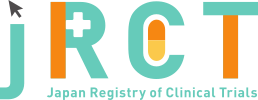臨床研究等提出・公開システム
|
April. 26, 2021 |
|
|
May. 12, 2025 |
|
|
jRCT2071210014 |
The purpose of this study is to investigate the use of benralizumab is effective in the treatment of patients symptomatic Bullous Pemphigoid (BP). (FJORD) |
|
A Multinational, Randomized, Double-blind, Parallel-group, Placebo-controlled Study to Investigate the Use of Benralizumab as a Treatment Option for Patients With Bullous Pemphigoid. (FJORD) |
|
Oct. 26, 2023 |
|
67 |
|
Please refer to 'Eligibility' in CT.gov. |
|
The clinical trial aimed to evaluate the efficacy of benralizumab in adult participants with symptomatic bullous pemphigoid (BP). Conducted across 32 sites in 11 countries, the study involved 67 participants who were randomized in a 1:1 ratio to receive either benralizumab or placebo for 36 weeks during the double-blind (DB) period. Participants who completed the DB period were eligible for an optional open-label extension (OLE) period, during which they received benralizumab for at least one year. The trial was terminated following a pre-planned futility analysis, as the efficacy results did not meet the predefined criteria. During the DB period, 16 out of 34 participants in the benralizumab group and 19 out of 33 participants in the placebo group completed the study. Reasons for non-completion included death, adverse events, sponsor termination, subject withdrawal, and physician decisions. In the OLE period, 16 participants from the benralizumab group and 18 from the placebo group started the extension, but none completed it, primarily due to sponsor termination. |
|
All-cause mortality, serious adverse events (SAEs) and non-serious AEs were collected from first dose of study treatment (Day 1) up to study termination (approximately 133 weeks). The safety analysis set consists of all participants who had received at least 1 dose of IP. During the double-blind (DB) period, SAEs were reported in 26.47% of participants in the benralizumab group and 24.24% in the placebo group. In the open-label extension (OLE) period, the incidence of SAEs was 25.00% in the benralizumab group and 11.11% in the placebo group. Additionally, During DB period, adverse events (AEs) (not icluding serious) were reported in 64.71% of participants in the benralizumab group and 69.7% in the placebo group. In the OLE period, the incidence of AEs was 50.0% in the benralizumab group and 44.44% in the placebo group. For details of SAEs and AEs for each period and each group, please refer to the table published on CT.Gov under Adverse Events. |
|
The primary outcome measure was the percentage of participants who achieved complete remission off oral corticosteroids (OCS) for at least 2 months at Week 36. In the benralizumab group, 11.1% (95% confidence interval: -2.70% to 26.11%) of participants achieved complete remission, compared to 5.26% (95% confidence interval: -5.06% to 15.07%) in the placebo group. Secondary outcome measures included the percentage of participants who remained relapse-free up to Week 36, cumulative OCS exposure from baseline to Week 36, change in Bullous Pemphigoid Disease Area Index (BPDAI) activity score from baseline to Week 36, and change in BPDAI-Pruritus score from baseline to Week 36. The percentage of participants who remained relapse-free was 23.78% (95% confidence interval: 5.95% to 41.61%) in the benralizumab group and 19.79% (95% confidence interval: 1.43% to 38.15%) in the placebo group. The mean cumulative OCS exposure was 71.37 mg/kg in the benralizumab group and 62.71 mg/kg in the placebo group. The mean change in BPDAI activity score was -53.29 in the benralizumab group and -52.75 in the placebo group. The mean change in BPDAI-Pruritus score was -5.57 in the benralizumab group and -16.58 in the placebo group. |
|
The study was terminated following a pre-planned futility analysis as the efficacy results did not pass the pre-defined futility hurdle with no new safety concerns. |
|
Sept. 27, 2024 |
|
Sept. 27, 2024 |
|
https://clinicaltrials.gov/study/NCT04612790?cond=Bullous%20Pemphigoid&term=Benralizumab&rank=1&tab=results#results-overview |
No |
|
https://jrct.mhlw.go.jp/latest-detail/jRCT2071210014 |
Hibi Kazushige |
||
Astrazeneka K.K |
||
3-1, Ofuka-cho, Kita-ku, Osaka-shi, Osaka |
||
+81-6-4802-3533 |
||
RD-clinical-information-Japan@astrazeneca.com |
||
Hibi Kazushige |
||
Astrazeneka K.K |
||
3-1, Ofuka-cho, Kita-ku, Osaka-shi, Osaka |
||
+81-6-4802-3533 |
||
RD-clinical-information-Japan@astrazeneca.com |
Complete |
Mar. 26, 2021 |
||
| 12 | ||
Interventional |
||
randomized controlled trial |
||
double blind |
||
placebo control |
||
parallel assignment |
||
treatment purpose |
||
Participants are eligible to be included in the study only if all of the following criteria apply: |
||
Participants are excluded from the study if any of the following criteria apply: |
||
| 18age old over | ||
| No limit | ||
Both |
||
Bullous Pemphigoid |
||
This study is designed to assess the efficacy and safety of a benralizumab 60 mg loading dose followed by repeat dosing of subcutaneously (SC) administered benralizumab 30 mg versus placebo in adult participants with symptomatic BP. |
||
Proportion of participants who are in complete remission while off OCS for 2 months or more at Week 36 (FAS) [ Time Frame: Week 36 ] |
||
| Astrazeneca K.K |
| JCHO Kyushu Hospital IRB | |
| 1-8-1, Kishinoura, Yahatanishi-ku, Kitakyushu-shi, , Fukuoka | |
+81-93-641-5111 |
|
| Approval | |
Nov. 16, 2020 |
| NCT04612790 | |
| ClinicalTrials.gov |
United States/Australia/Bulgaria/France/Germany/Israel/Italy/Spain |
